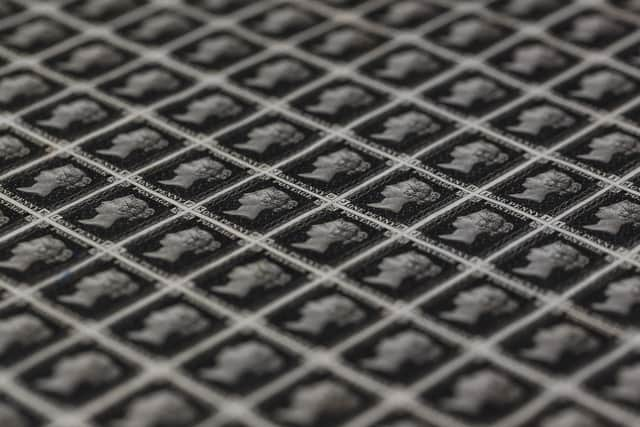Chichester stamp collectors urge others to discover the joy of philately during the lockdown
and live on Freeview channel 276
The Chichester & District Philatelic Society is one whose members collect stamps and envelopes (covers).
Often, members specialise in one or more areas.
Some enjoy studying the stamps from say King George V, Penny Blacks, USA, Western Samoa, while others collect thematically.


Advertisement
Hide AdAdvertisement
Hide AdThese might collect parrots, cricket items, or ships on stamps and covers, for instance.
We have another members who enjoy collecting Cinderellas, stamps that resemble postage stamps but were not issued as such.
One has never seen so many cigarette band stamps, train labels, tax duty stamps, and more!
Finally, there are the more modern Horizon labels that are issued from post office machines.
Advertisement
Hide AdAdvertisement
Hide AdThese also have a vast array of glitches, errors, oddities and more on them!
On May 1, 1840, over 2,000 stamp design ideas were submitted to Mr Rowland Hill.
His was the difficult choice in opting for one design.
In the end, however, he opted for his own design!
The 1d Black, The Penny Black, was chosen.
It is such a national icon that pubs were named after it, and British passports have designs of it on the pages of passports.
There was a deep dark blue 2d, or Penny Blue, stamp issued also.
Advertisement
Hide AdAdvertisement
Hide AdHowever, it was obvious that the black,or red, inks used to create cancellations weren’t being seen very well on these stamps.
So in 1841 the Penny Red was printed.
Over 21 billion Penny Reds were used over decades.
The Penny blacks, blues and reds were all imperforated. This means they didn’t have perforations like we seen on regular stamp issues today. Perforations evolved in 1854.
The imperforate stamps were printed in sheets , many on a Jacob Perkins’ press, which was run by hand!
The sheets of stamps had to be cut out with scissors.
Stamps can be seen with margin/no margin, and the ones with four clean margins can command high prices when auctioned!
Advertisement
Hide AdAdvertisement
Hide AdFor the Penny Black a print run of 286,700 sheets containing 68,808,000 stamps was produced.
Hopefully this is the first of a few articles I’ll write on stamp collecting.
During these days when many of us are indoors why not locate that old family album, or the one you had when you were a child?
Maybe some of the stamps mentioned are in them?
Philately affords the opportunity to learn new things, history, geography, languages, politics, sports, and more.
Advertisement
Hide AdAdvertisement
Hide AdThis is what we do at club level internationally, nationally and at local level!
What a joy to share our passion of stamp collecting with others.
Martha Brown, president of Chichester and District Philatelic Society
---
A message from the Editor, Gary Shipton:
Thank you for reading this story on our website.
But I also have an urgent plea to make of you.
In order for us to continue to provide high quality local news on this free-to-read site and in print, please purchase a copy of our newspaper as well. With the coronavirus lockdown having a major impact on our town centres and many of our valued advertisers - and consequently the advertising that we receive - we are more reliant than ever on you buying a copy.
Advertisement
Hide AdAdvertisement
Hide AdOur journalists are highly trained by the National Council for the Training of Journalists (NCTJ) and our content is independently regulated by IPSO to some of the most rigorous standards anywhere in the world. Our content is universally trusted - as all independent research proves.
As Baroness Barran said in a House of Lords debate this week on the importance of journalists: “Not only are they a trusted source of facts, but they will have a role to play in rallying communities and getting the message across about how we can keep ourselves and our families safe, and protect our NHS. Undoubtedly, they have a critical role.”
But being your eyes and ears comes at a price. So we need your support more than ever to buy our newspapers during this crisis. In return we will continue to forensically cover the local news - not only the impact of the virus but all the positive and uplifting news happening in these dark days.
In addition, please write to your MP urging the Government to provide some additional financial support for local newspapers and their websites like this one and ensuring that supermarkets continue to stock them. I cannot stress enough how important such an intervention would be.
We thank all our readers and advertisers for their understanding and support - and we wish YOU all the best in the coming weeks. Keep safe, and follow the Government advice. Thank you.